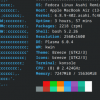The many facets of Linux security
As we've seen in the last several days, there's a lot going on in the Linux community with regards to security. In this series of articles we've covered SELinux, AppArmor, Bastille, how vendors' secure distributions deal with security, and looked at the progress the US Department of Homeland Security is making in its "vulnerability discovery and remediation open source hardening project" -- and that's just the tip of the iceberg.
There is, of course, plenty of work left to be done. As Mayank Sharma points out in his AppArmor article, AppArmor has not been adopted in many distros outside of SUSE and openSUSE, and SELinux is not exactly easy to configure. Still, both security frameworks are making headway, and lots of organizations are using them to help secure their systems.
Though AppArmor and SELinux address a number of problems, there's just no magic software you can install to keep your system 100% secure. As security expert Kurt Seifried noted, every administrator needs to have "a degree of security knowledge" to be able to run a system or service safely. Even with all patches applied and SELinux or AppArmor enabled, a poorly configured system can be a recipe for disaster.









































































